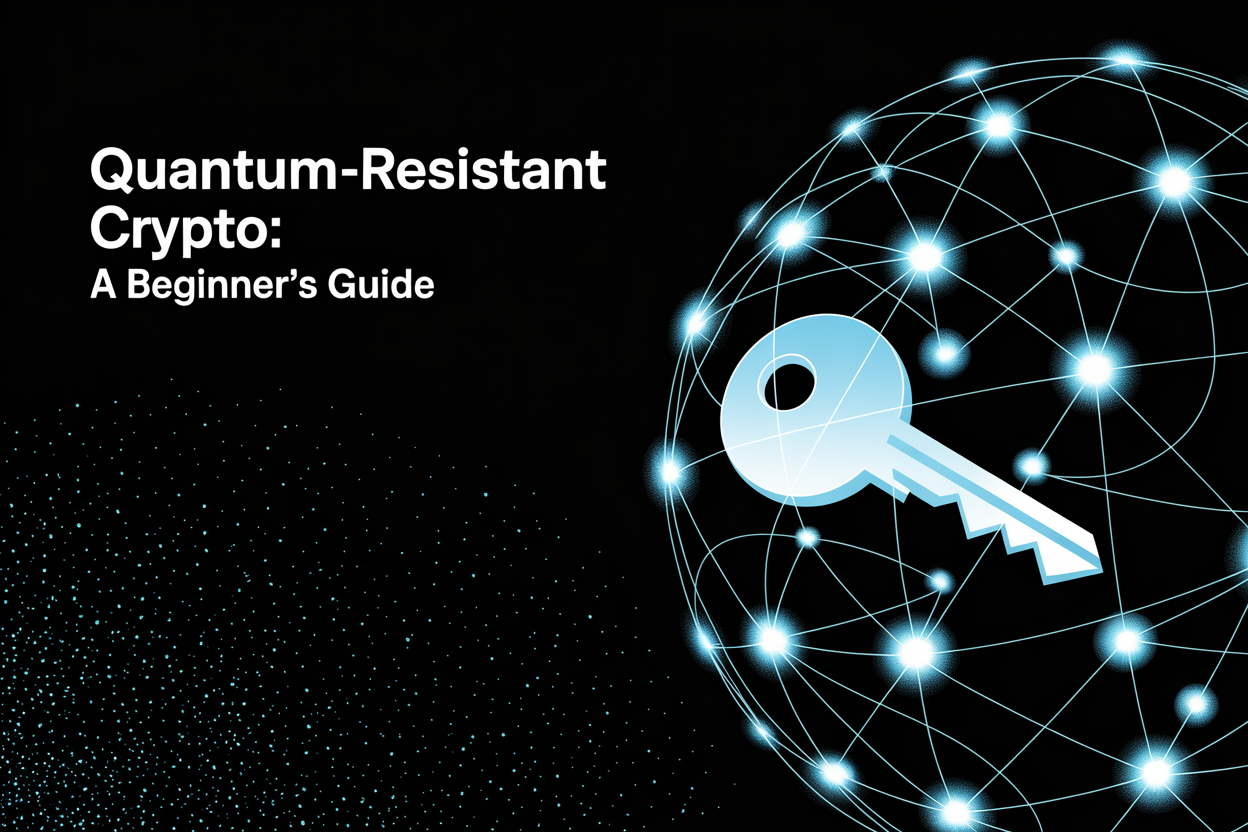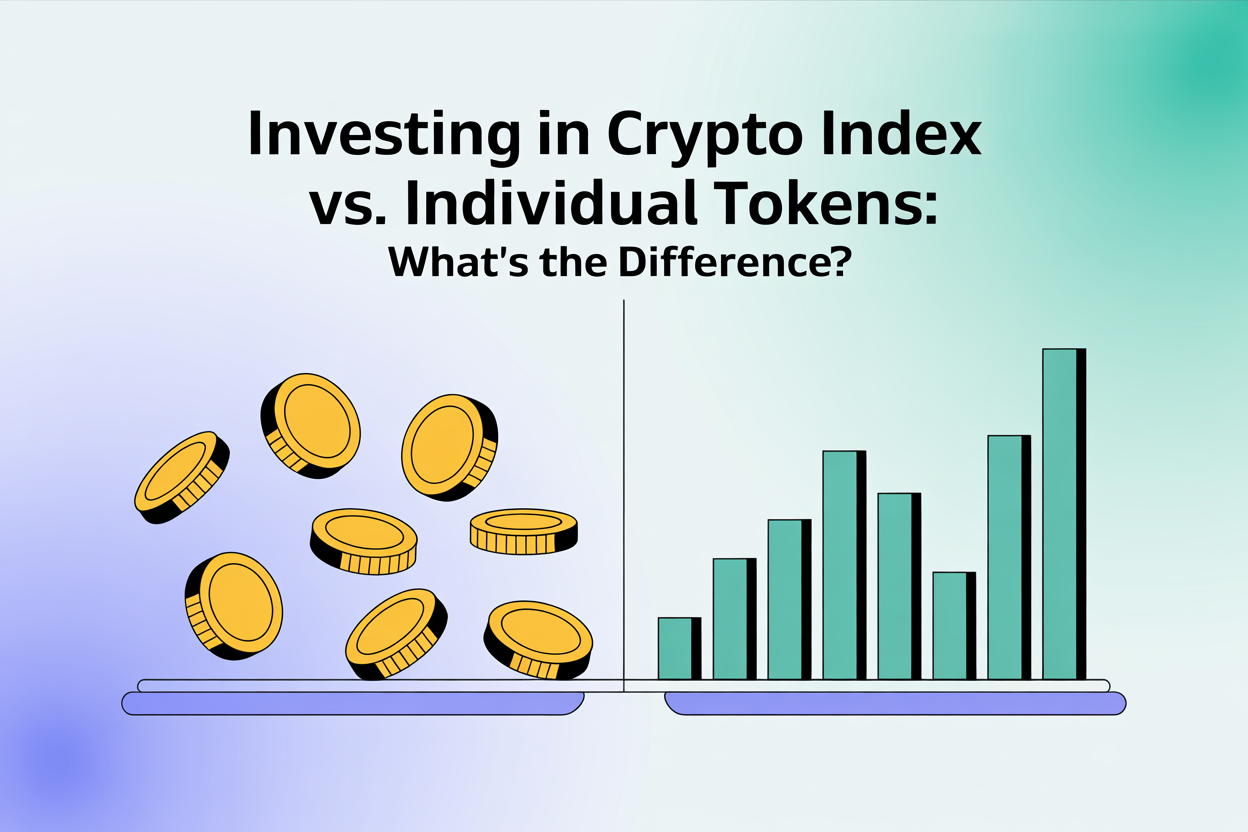Now Reading: Quantum-Resistant Crypto: A Beginner’s Guide
- 01
Quantum-Resistant Crypto: A Beginner’s Guide
Quantum-Resistant Crypto: A Beginner’s Guide

The rise of quantum computing is a big worry for our digital security. Quantum computers can solve complex problems way faster than old computers. This could break the encryption that keeps our data safe.
As we step into the quantum era, learning about post-quantum cryptography is key. It helps protect our digital world. Getting ready for the quantum era means using new, quantum-proof algorithms. NIST is working on these standards.

The call for quantum-safe cryptography is growing. Experts say we might see quantum computers that can break RSA-2048 by 2035-2040.
Key Takeaways
- Understanding the threat of quantum computing to current cryptographic systems.
- The importance of post-quantum cryptography in the quantum era.
- NIST’s role in standardizing quantum-resistant algorithms.
- The need for a shift towards quantum-safe cryptography.
- Predictions for the emergence of powerful quantum computers.
The Quantum Computing Revolution
Quantum computing is a big step up in processing power. But, it also brings big threats to our current encryption systems. This new way of computing uses quantum mechanics to do things that old computers can’t.
What Makes Quantum Computing Different
Quantum computers are different because they use qubits, not bits. Qubits let quantum computers handle lots of data at once. This makes them super powerful, but it also means they can break some encryption types.
Current State of Quantum Computing Development
Quantum computing is moving fast, with big companies and research groups putting a lot of money into it. Even though it’s still early, the progress is huge. Knowing where quantum computing stands now is key to understanding its risks to security. As it keeps getting better, we need to keep up with its growth and how it affects quantum cybersecurity.
The dangers quantum computing poses to our encryption are real and urgent. We must focus on fixing these problems in cybersecurity.
Understanding Traditional Cryptography
Traditional cryptography is key to keeping our data safe today. But, quantum computing is changing the game. It’s important to know how traditional cryptography works.
Cryptography has two main types: symmetric and asymmetric encryption. Symmetric encryption uses one key for both encrypting and decrypting. It’s quick and good for big data. On the other hand, asymmetric encryption uses a public key for encrypting and a private key for decrypting. It’s safer for key exchange but takes more work.
Symmetric vs. Asymmetric Encryption
Choosing between symmetric and asymmetric encryption depends on the task. For example, online transactions use both. Asymmetric encryption is for key exchange, and symmetric encryption handles the data.
Common Cryptographic Algorithms in Use Today
Some top algorithms include:
- AES (Advanced Encryption Standard) for symmetric encryption
- RSA (Rivest-Shamir-Adleman) and ECC (Elliptic Curve Cryptography) for asymmetric encryption
- SHA-256 (Secure Hash Algorithm 256) for hashing
These algorithms are safe against old computers. But, quantum computers could break them, especially RSA and ECC.
The Quantum Threat to Cryptography
Quantum computing is a big threat to our digital security. As we use more digital security, knowing the risks from quantum computing is key.
How Shor’s Algorithm Breaks RSA and ECC
Shor’s algorithm is a quantum method that breaks big numbers fast. This is bad news for RSA and ECC, which rely on hard math problems. It’s important to use quantum-safe cryptography to protect our data. For example, a strong quantum computer can crack RSA-2048 in seconds.
Here are some important points about Shor’s algorithm:
- It solves problems that keep RSA and ECC safe.
- Its speed on quantum computers is a big danger to our current encryption.
- We need to switch to quantum-safe algorithms to stay safe.
Impact of Grover’s Algorithm on Symmetric Encryption
Grover’s algorithm also affects cryptography, especially for symmetric encryption. It can find something in a database faster than old computers. This makes a quantum computer a big threat to our encryption.
To fight Grover’s algorithm, we should:
- Use bigger keys for symmetric encryption to stay safe.
- Check our encryption and plan for quantum-safe options.
- Learn more about using blockchain for privacy at Blockchain for Privacy-Enhancing Technology.

In short, quantum threats to cryptography are real and coming soon. Knowing how Shor’s and Grover’s algorithms harm our encryption is the first step to fixing it. By using quantum security measures, like switching to quantum-safe algorithms and adjusting key sizes, we can keep our digital world safe.
What Is Quantum-Resistant Crypto?
Quantum-resistant cryptography is a new way to keep our digital communications safe. As quantum computers get better at breaking old encryption, we need new methods to stay secure. These new methods must be strong against both old and new computers.
At its heart, quantum-resistant crypto aims to protect against both classical and quantum computers. It uses algorithms that are hard for both to crack. The main idea is to use problems that are tough for any computer to solve.
Definition and Core Security Principles
Quantum-resistant cryptography includes many techniques and algorithms that can’t be broken by quantum computers. It’s based on problems that are hard for quantum computers, like lattices, codes, and hash functions.
These algorithms keep data safe and ensure it’s not tampered with, even with a powerful quantum computer trying to break it. Their security comes from problems that are hard for quantum computers, like Shor’s algorithm.
Mathematical Problems Resistant to Quantum Attacks
Several mathematical problems are hard for quantum computers, making them key for quantum-resistant crypto. Some of these include:
- Lattice problems, such as the Shortest Vector Problem (SVP) and the Learning With Errors (LWE) problem.
- Code-based cryptography, which relies on the hardness of decoding random linear codes.
- Hash-based signatures, which are based on the security of hash functions.
These problems are hard for both old and new computers to solve. They’re perfect for making quantum-resistant crypto. By using these problems, we can protect our digital world from quantum threats.
Timeline: When Will Quantum Computers Break Encryption?
Experts warn that quantum computers could soon break our encryption. They predict key moments in this race. Knowing when these machines will threaten our encryption is vital.
Expert Predictions and Critical Milestones
Quantum computing experts have different timelines for when encryption will be broken. Some say we’ll see big changes in the next ten years. This could put our sensitive data at risk. Important moments include:
- Advancements in quantum computing hardware
- Development of more robust quantum algorithms
- Increased investment in quantum technology
These steps show we’re moving fast towards a world where quantum computers are common. We need to act now to keep our data safe.
Understanding the “Store Now, Decrypt Later” Threat
The “store now, decrypt later” threat is serious. It means storing encrypted data now, planning to decrypt it later with quantum computers. This could expose data we thought was safe.
We must act quickly to switch to quantum-safe cryptography. This way, our sensitive information will stay protected from future quantum attacks.
Post-Quantum Cryptography Standardization
NIST is working hard on making cryptography safe for the future. With quantum computers getting better, we need new standards to protect our data.
NIST’s Selection Process and Timeline
NIST started a post-quantum cryptography standardization effort. They want to find the best algorithms to fight quantum attacks. This is a big job, with many experts from around the world helping out.
The process is detailed and takes a long time. NIST checks each algorithm carefully to see how well it holds up against quantum threats. They keep everyone updated on their progress.
Current Status of Quantum-Resistant Standards
The journey towards quantum-resistant standards is moving forward. NIST has made big steps in testing and improving the algorithms. Some are now close to being chosen.
As we move forward, it’s important for everyone to stay in the loop. This way, we can all get ready for the new quantum-safe cryptography standards.
Assessing Your Cryptographic Vulnerability
Quantum computing has changed the game for cryptography. It’s now key for companies to check their crypto systems for weaknesses. This is to keep their important data safe from quantum attacks.
Identifying Critical Data and Systems at Risk
First, find out what data and systems use old crypto methods. This includes info that uses RSA and ECC, which quantum computers can break. It’s vital to spot these assets first to tackle the problem effectively.
Tools for Cryptographic Inventory Assessment
There are many tools to help check your crypto setup. They scan systems, networks, and apps to find where crypto is used.
Open Source Options
Open-source tools are a good start for many. Cryptograph and OpenSSL can help you see and check your crypto use.
Enterprise Solutions
Big or complex setups need enterprise tools. These offer detailed checks and management. They come from top cybersecurity firms with advanced features for finding and fixing crypto issues.
Using these tools and methods, companies can tackle their crypto weaknesses. This makes them safer against the growing quantum threat.
Creating Your Quantum-Resistant Transition Plan
Creating a plan to protect against quantum attacks is key for any organization. As quantum computing gets better, it’s vital to check your current security and plan to use stronger algorithms.
The first step is to know what you’re protecting. This means identifying critical data and systems that need to be safe.
Setting Priorities Based on Risk Assessment
To set priorities, you must do a detailed risk assessment. This includes:
- Identifying sensitive data that needs protection
- Assessing the likelihood of a quantum attack
- Evaluating the potential impact of a quantum attack on your organization
By focusing on high-risk areas first, you can protect what matters most.
Establishing a Realistic Timeline
Having a realistic timeline is crucial for a smooth transition. This means:
- Assessing the complexity of your cryptographic infrastructure
- Evaluating the resources needed for the transition
- Creating a step-by-step plan
A good timeline helps manage resources well and keeps operations running smoothly.
Budgeting for Quantum Security
Budgeting for quantum security is a big part of your plan. This includes:
- Upgrading your cryptographic infrastructure
- Training staff on new algorithms
- Putting in new security measures
Effective budgeting ensures a smooth switch to quantum-resistant cryptography. This keeps your sensitive information safe.
In summary, making a quantum-resistant plan needs careful planning, risk assessment, and budgeting. By doing these steps, organizations can get ready for the quantum era and keep their data safe from future attacks.
Understanding Lattice-Based Cryptography
Lattice-based cryptography is key in the fight against quantum threats. It uses lattices, which are point arrangements in n-dimensional space. This method is seen as a strong defense against both classical and quantum computers.
How CRYSTALS-Kyber Works
CRYSTALS-Kyber is a top choice for NIST’s standardization. It tackles the Module-LWE problem, a quantum-proof variant of LWE. Its security is rooted in lattice problems, making it safe against all types of attacks. CRYSTALS-Kyber is known for its efficiency and security, fitting many uses.

Implementation Considerations for Developers
Developers face several challenges when working with lattice-based cryptography. Choosing the right parameters is crucial for both security and speed. Side-channel resistance is also vital, as lattice schemes can be vulnerable to certain attacks. Proper key management and countermeasures are essential for security.
Staying updated on standardization and NIST’s recommendations is important. As post-quantum cryptography advances, keeping up with new information is key for lasting security.
Implementing Hash-Based Signatures
Hash-based signatures are becoming key in moving to quantum-safe cryptography. They use hash functions, making them safer against quantum attacks than old public-key systems.
SPHINCS+ and Stateless Signatures
SPHINCS+ is a signature scheme that’s getting a lot of attention for its quantum safety. It works without needing to keep track of state, making it easier to use and more secure. Stateless signatures are great because they don’t have the problems of stateful systems.
Code Examples and Integration Points
To use hash-based signatures like SPHINCS+, you need to add them to current crypto systems. Developers can use open-source libraries for these algorithms. For example, adding SPHINCS+ to a crypto protocol might mean using its API for signing and checking messages. Here’s a basic example:
- Make a key pair with SPHINCS+.
- Sign a message with the private key.
- Check the signature with the public key.
When adding hash-based signatures, think about how they affect performance and key sizes. It’s also important to make sure they work well with other systems and protocols for a smooth move to quantum-proof encryption.
Building Crypto Agility Into Your Systems
Adding crypto agility to our systems is now a must, not just a nice-to-have. As we move towards a world with quantum threats, we need systems that can quickly adapt to new security methods. This means designing systems that can easily switch to new algorithms and protocols.
Designing for Algorithm Flexibility
To make systems agile, we must focus on flexibility. This means separating the crypto parts from the rest of the system. This way, we can swap out algorithms easily. Modular design is crucial, allowing updates without disrupting the system.
Testing and Validation Frameworks
Having a strong testing and validation framework is key to keeping systems secure and agile. This includes:
- Implementing continuous security testing to find vulnerabilities early.
- Regularly checking performance benchmarking to avoid slowdowns.
Continuous Security Testing
Continuous security testing checks the crypto parts of the system for weaknesses. It makes sure they’re safe against both old and new threats. This approach helps catch and fix problems before they cause big issues.
Performance Benchmarking
Performance benchmarking helps us see how crypto operations affect the system. By testing different algorithms, we can choose the best ones for our needs. This balances security with how fast the system runs.
In summary, making systems agile requires careful planning, modular design, and ongoing testing. By focusing on these areas, we can keep our systems safe and ready for the future. This ensures we’re using quantum cybersecurity and quantum security measures effectively.
Quantum-Resistant Crypto for Blockchain and Cryptocurrencies
Using quantum-resistant crypto in blockchain and cryptocurrencies is now a must. Quantum computing is getting better, which makes our current security weak. Blockchain, which supports Bitcoin and Ethereum, uses algorithms that quantum computers can break.

Protecting Wallet Private Keys
Keeping wallet private keys safe is a big worry. Most wallets use methods that quantum computers can hack. Switching to quantum-resistant algorithms is key. This means using methods that quantum computers can’t break.
Evaluating Quantum-Safe Blockchain Projects
Many blockchain projects are adding quantum-safe cryptography. It’s important to look at how well they handle quantum threats. We need to see if their algorithms are strong and can keep up with future dangers.
Quantum-Resistant Ledger (QRL)
The Quantum-Resistant Ledger (QRL) is a blockchain that focuses on quantum safety. It uses XMSS (eXtended Merkle Signature Scheme), a method that quantum computers can’t crack. This makes QRL safe for the future.
Other Notable Implementations
Other projects are also working on quantum-safe cryptography. Some are looking into lattice-based cryptography and code-based cryptography. It’s important to check how secure, scalable, and easy to use these methods are. This will help quantum-resistant crypto become more common in blockchain and cryptocurrencies.
Overcoming Implementation Challenges
Quantum security measures are key, but they come with big hurdles. These include performance issues and making sure they work with old systems. As companies start using quantum-resistant algorithms, they face these obstacles head-on.
Addressing Performance Overhead
The big worry with quantum-resistant cryptography is how slow it can be. To fix this, developers work on making algorithms faster. For example, using computers that can do lots of things at once or special hardware can really help.
Ensuring Compatibility with Legacy Systems
Another big challenge is making sure quantum-resistant algorithms work with old systems. Companies need to check if these new methods will fit with what they already have. They also need plans to mix the new with the old smoothly.
Managing Key Sizes and Storage Requirements
Handling key sizes and storage needs is also very important. Bigger keys mean more security but take up more space. Companies have to find a balance between keeping things safe and not running out of room. They might use new ways to manage keys.
Quantum-Resistant Solutions for Everyday Users
Quantum computing is becoming a reality, and we all need to protect our digital security. The good news is that quantum-proof encryption solutions are here to help. These solutions are easy to use, making sure everyone can stay safe in a post-quantum world.
Secure Messaging and Email Options
Secure messaging and email services are getting a boost from quantum-resistant solutions. Some messaging apps are now using quantum-resistant cryptography to keep your chats safe. This includes end-to-end encryption that can withstand quantum attacks.
Password Managers and Authentication
Password managers are key for keeping your online accounts safe. Using a password manager with quantum-safe encryption helps protect your login details. Also, some authentication services are starting to use quantum-resistant protocols for better security.
File Encryption Tools
File encryption tools are also essential. They let you encrypt sensitive data, making it unreadable to others. By using tools with quantum-resistant algorithms, you can keep your data safe in a post-quantum world.
In conclusion, there are many ways for everyday users to protect their digital security as quantum computing advances. By using quantum cybersecurity solutions like secure messaging apps, password managers, and file encryption tools, you can keep your personal data safe from quantum threats.
Preparing for the Post-Quantum Future
As we head towards a post-quantum future, it’s key to grasp the role of quantum-resistant crypto. It’s about protecting our digital stuff. We start by checking our current crypto weaknesses and moving to new, safer standards.
Companies need to be quick to change their crypto methods. This means being ready to switch algorithms when needed. By doing this, we make our systems safe from future quantum threats.
Keeping up with new info on quantum-resistant crypto is vital. By acting now, we can keep our digital world safe for years to come.
FAQ
What is quantum-resistant cryptography, and why is it necessary?
Quantum-resistant cryptography, or post-quantum cryptography, is designed to protect against quantum computers. It’s needed because today’s encryption can be broken by quantum computers. This is due to algorithms like Shor’s, which can solve big number problems fast.
How does quantum computing threaten current cryptographic systems?
Quantum computers can break some encryption algorithms much quicker than regular computers. For example, Shor’s algorithm can factor large numbers very fast on a quantum computer. This makes RSA and ECC encryption vulnerable.
What are some examples of quantum-resistant cryptographic algorithms?
Some quantum-resistant algorithms include lattice-based cryptography (like CRYSTALS-Kyber), hash-based signatures (such as SPHINCS+), and code-based cryptography. These are made to resist attacks from both classical and quantum computers.
What is the current status of post-quantum cryptography standardization?
The National Institute of Standards and Technology (NIST) is working on post-quantum cryptography standards. NIST is choosing quantum-resistant algorithms through a public process. Their goal is to set new standards that can resist quantum attacks.
How can organizations prepare for the transition to quantum-resistant cryptography?
Organizations should first check their current encryption for vulnerabilities. Then, they should identify what data and systems are at risk. Next, they need to plan how to switch to quantum-resistant algorithms.
This includes setting priorities, making a timeline, and budgeting for the necessary steps. This might include using new algorithms and making systems more flexible.
What is crypto agility, and why is it important in a post-quantum world?
Crypto agility means a system can easily switch between different encryption methods. It’s key in a post-quantum world because it lets organizations quickly use new, secure algorithms. This keeps their data safe from new threats.
Are there any quantum-resistant solutions available for everyday users?
Yes, there are quantum-resistant solutions for everyday people. These include secure messaging, email, password managers, and file encryption software. These tools help protect personal data in a post-quantum world.
What is the “store now, decrypt later” threat, and how does it impact data security?
The “store now, decrypt later” threat is about storing encrypted data now for later decryption. This threat is a problem because it could expose sensitive information. This is because the encryption used is vulnerable to quantum attacks.















